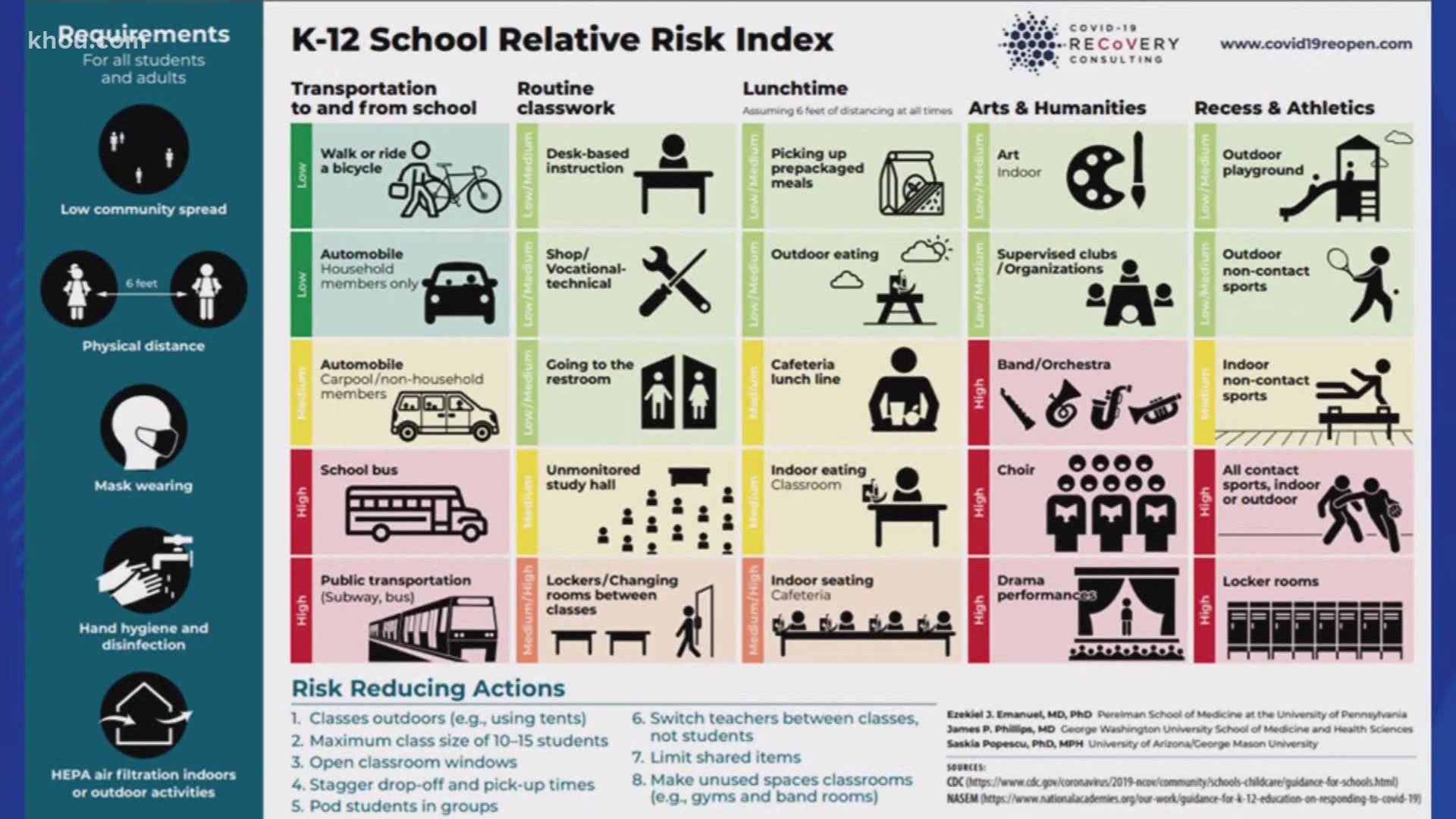HOUSTON — Whether kids are heading back to an in-classroom setting now or later, there’s a lot to think about when it comes to risk. But there’s a simple tool out there that could help parents, teacher and kids lower those risks: an infograph designed by COVID-19 experts.
Everyday, scientists are learning more about COVID-19, which is good, however, it’s leading to an onslaught of new information released all the time.
“People just are looking for answers and those answers are a lot harder to find with this 'infodemic,' right? We are getting a lot of information really quickly, so it’s a little bit more difficult to process for the community,” said Dr. Katelyn Jetelina, an epidemiologist at UTHealth School of Public Health in Dallas. “It’s really important for scientists to figure out a simple message for people to remember.”
Dr. Jetelina is gearing up to learn even more information as kids in Texas go back to school.
“This is such an unprecedented time, and we haven’t been open, so we haven’t had lessons to learn yet," Dr. Jetelina said.
She recommends a tool to help keep things simple for parents trying to navigate back to school risks for their kids: a K-12 risk index infographic designed by three COVID-19 experts based on a whole host of scientific data.
It’s based on CDC and National Academy of Science recommendations. The recommendations were summarized and translated by three scientists. The scientists' bios can be found here.
“They translated all of those complicated recommendations that are based on research and lessons learned in the international schools, and how to apply it in the real world... daily activities for kids," Dr. Jetelina said.
It breaks school routines down into categories like transportation, classwork and recess, then uses color codes to break down the risk level.
For example: recess. An outdoor playground is considered low/medium risk, indoor non-contact sports, scores medium risk, and all contact sports are high risk.
“I would sit down with my kids, if they are old enough to understand, and walk through these risk factors so that they have a general understanding of what they are and why. You could even print it out and put it in their backpack," Dr. Jetelina said.
It’s a simple tool that could make a complicated, evolving topic a little easier to understand.
“We are now in a long-term pandemic response, and so what that means is also balancing the quality of life," Dr. Jetelina said.
Dr. Jetelina also recommends this Facebook page for updated COVID-19 information.

